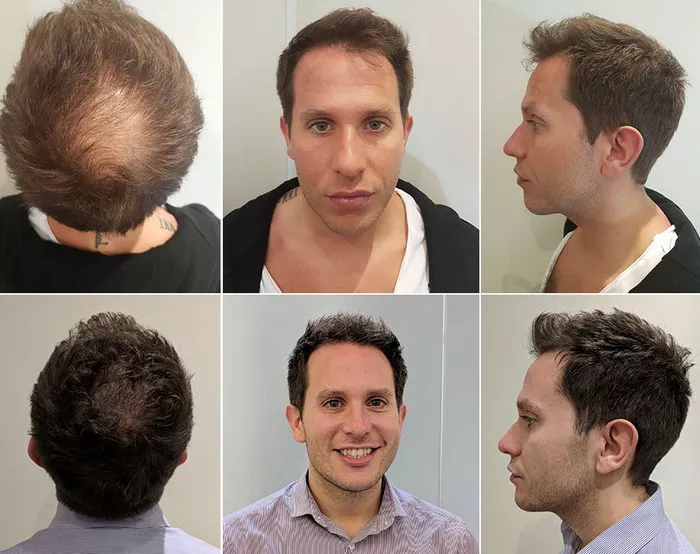Hair transplant procedures have become a popular solution for individuals seeking to restore their hairline and achieve a fuller head of hair. One common question that arises is when to expect the transplanted hair to thicken and provide the desired results. In this article, we will delve into the process of hair transplant thickening, exploring the various stages and factors that contribute to the final outcome. By understanding the timeline and considerations involved, individuals can set realistic expectations for their hair restoration journey.
Types of Hair Transplant Surgery
There are two main types of hair transplant surgery: Follicular Unit Transplantation (FUT) and Follicular Unit Extraction (FUE). FUT involves removing a strip of scalp with hair follicles, dissecting it, and transplanting the units. FUE involves individually extracting follicles from the donor area and implanting them. Variations include robotic-assisted methods and Direct Hair Implantation (DHI), which skips recipient incisions. Each method has pros and cons, and the choice depends on factors like hair loss extent, donor area quality, and personal preference. Consulting a qualified surgeon is essential to select the most suitable technique for your needs.
Will there be pain after hair transplant surgery?
Pain levels after a hair transplant surgery can vary from person to person. Most individuals experience some degree of discomfort, mild pain, or soreness in the first few days following the procedure. This discomfort is usually manageable with over-the-counter pain relievers prescribed by the surgeon. The level of pain may depend on factors such as the individual’s pain threshold, the specific technique used (FUT or FUE), the size of the transplant, and the surgeon’s expertise. However, significant pain is uncommon, and any discomfort typically subsides as the healing process progresses.
When Does Hair Transplant Thicken
Hair transplants typically involve the transfer of healthy hair follicles from a donor area to areas experiencing hair loss. After the transplant, the hair goes through several phases before achieving its final thickness:
1. Initial Shedding:
In the first few weeks after the transplant, the transplanted hair often goes through a shedding phase. This is a normal part of the process as the hair follicles enter a resting phase before regrowing.
2. Resting Phase:
Following shedding, the transplanted hair follicles enter a temporary resting phase. During this time, the hair is not actively growing, and there might be minimal visible growth.
3. Regrowth:
After a few months, the transplanted follicles begin to regrow new hair. Initially, the hair might appear thin and fine.
4. Thickening:
Over the course of several months, the transplanted hair gradually thickens and becomes more noticeable. This thickening process continues as the hair goes through multiple growth cycles.
5. Full Results:
It can take around 8 to 12 months for the transplanted hair to reach its full thickness and mature. The final results may vary depending on factors like the individual’s hair growth cycle, genetics, and the quality of the transplant.
It’s important to have realistic expectations and be patient during the post-transplant period. Hair growth is a gradual process, and it takes time for the transplanted hair to achieve its desired thickness and natural appearance. Regular follow-up appointments with the hair transplant surgeon can help monitor progress and address any concerns.
Precautions after surgery
After a hair transplant surgery, it’s important to follow specific precautions to ensure proper healing and optimal results. Here are some general guidelines:
1. Follow Post-Operative Instructions:
Carefully adhere to the instructions provided by your surgeon for cleaning, medication, and care of the transplant area.
2. Avoid Touching:
Avoid touching, scratching, or rubbing the transplanted area to prevent dislodging grafts.
3. Protect from Sun Exposure:
Shield your scalp from direct sunlight for the first few weeks using hats or scarves. Sun exposure can damage healing tissue.
4. Avoid Strenuous Activities:
Refrain from intense physical activities, heavy lifting, or exercises that could increase blood flow to the scalp for a week or as advised.
5. Limit Alcohol and Smoking:
Avoid alcohol consumption and smoking during the recovery period, as these can hinder healing.
6. Avoid Swimming and Saunas:
Steer clear of pools, hot tubs, and saunas for a few weeks to minimize the risk of infection.
7. Patience:
Hair growth and full results take time. Be patient and realistic in your expectations.
Remember, every individual’s recovery process can vary, so it’s important to consult your surgeon for specific aftercare instructions tailored to your procedure and needs. Following these precautions will help ensure successful healing and optimal outcomes from your hair transplant surgery.
See Also: The Best Hair Transplant Surgery Options in Canada
Conclusion
In conclusion, the process of hair transplant thickening is a gradual journey that involves several phases. While the initial period may involve shedding and the growth of fine hair, the true transformation occurs between 6 to 18 months after the procedure. Patience is key during the entire process, as the hair gradually thickens, matures, and blends with your natural hair. By understanding the timeline and stages of hair transplant thickening, individuals can set realistic expectations and enjoy the gradual and rewarding results of their hair restoration journey.


